An Old Moral Judgment: Japan Exploited Asian Colonies / A Statement of Fact: Unlike the West, Japan Advanced Modernization
"Some Views of Western Experts Who Thought Japan's War Was Justified" Part 12
Koreans call the time of Japan’s rule over Korea, “Japanese Imperialism, 36 Years” and emphasize how Koreans were oppressed. However, the truth is different. Hard-earned tax money equaling today’s 6 trillion yen, was invested to set up infrastructures such as railways and hydroelectric power plants. Schools were built and enrollment was dramatically improved. In these ways modernization was advanced. It was the same in Taiwan. Such situations were unseen under Western colonial rule. Along with photos from that time, we will show the truth of how investment was made that went far beyond the “conventional wisdom” that the West have regarding Japanese rule.
The Rights of Koreans?
The West Took Land and Life in Their Colonies
The Western nations trampled on the locals’ basic human and property rights during their colonial rule. 33 million natives were slaughtered in a century of Spanish conquest of central and south America. To make up for the work force lost by the massacre, the West brought black slaves from African colonies through “forced entrainment,” and over the course of 300 years, their number exceeded 10 million people.
When France colonized the eastern parts of Indochina, large areas of land were taken away, under the proclamation that “land without an owner will be confiscated”, from locals who had no concept of “land ownership”. The United States too, forced the Native Americans who had no concept of “land ownership” to sign off, and took their land.
Japan Gave Koreans the Right to Vote and to Hold Office
Japan introduced democracy to Korea. While elections weren’t realized due to the end of the war, by 1945 election laws were enacted to make it possible to “hold elections in Korea, and send a representative to Japan’s Parliament”.
For Koreans in Japan, voting rights and the right to hold office were recognized early on, and from 1930, it was possible to enter a ballot in Hangul. Furthermore, from the 1930s many Koreans in Japan declared candidacy for the House of Representatives, with some being elected to become members of Parliament.
Japan Gave Land to Koreans
It is written in textbooks that Japan had “unilaterally conducted land surveys, and having determined that ownership was not clear, expropriated large areas of land from Korean farmers.” But was this really the case?
Before the Japanese annexation of Korea, there was no system of land ownership in Korea, and the forced expropriation of land by the ruling class from farmers occurred on a daily basis. To stop this from happening, Japan conducted land surveys, and clarified ownership. The farmers themselves were happy to see the cadastral of their lands and took the initiative to help in the endeavor. As a result, only 3% of undeclared land was left, and that too was sold off to the Korean people.
Japan Married Off Royalty to Korea
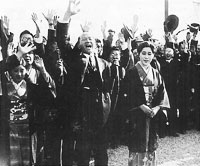
In 1932a Korean, Park Shunkin, celebrating his election to the Japanese House of Representatives.
After the annexation of Korea by Japan, to show that Koreans would be treated equally to Japanese, Japan married off Masako Nashimoto-no-miya of the Japanese imperial family to Crown Prince Yi Un of Korea. The British did the exact opposite of that, where upon colonizing Burma, they made the queen of the dynasty they destroyed marry a common Indian soldier. Moreover, the Indian soldier had a wife, and so the queen was treated as a mistress.
What About Korea’s Education and Culture?
Western Nations Denied Education in the Interest of Colonial Rule
Western nations denied education to make sure the population under their colonial control couldn’t read or write, in a deliberate “policy of keeping the population ignorant”. This was done to prevent the population from gaining the intellectual level and ethnic consciousness to the point where an independence movement can form. A typical example of this is the policy that the Netherlands enforced in Indonesia. Not only did they deny them learning Dutch, they prevented them from uniting their various local dialects.
Japan Built Many Schools in Korea

In contrast to Western educational policy, Japan thought that education was essential for the modernization of Korea, and made it a policy to build schools throughout Korea. As a result, while there were only 100 schools before the Korean annexation, 6000 elementary schools were built, and the 1% attendance rate increased to 61% by 1943. Furthermore, before the Imperial University (currently Osaka University) was built in Osaka, the Keijo University (currently Seoul University) was built.
It Was the Koreans Who Demanded “Soshi-Kaimei”
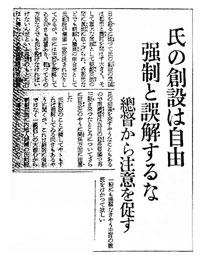
1940 March 6th
Osaka Asahi, China Korea Edition
In textbooks, it is said that Japan forced “soshi-kaimei” and took away the Koreans’ names in favor of Japanese names. However, it was the Koreans who first demanded that they be allowed to use Japanese names. It was because if they had Japanese names they would not be scorned by Chinese and Manchurians. The Japanese police department opposed this, saying smuggling would increase and maintaining public order would become difficult. In 1939, after discussions, Koreans’ were “permitted” to change their names to Japanese names.
However, within the Korean community, the “Japanese name change movement” intensified, and there were even some who committed suicide when they were forced by their peers to change their names. For this reason, the Korean governor-general notified three times that the “soshi-kaimei is not forced.”
Athletic events at schools were introduced by Japanese
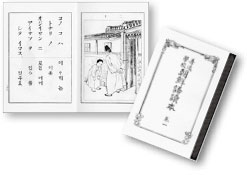
Textbooks used in Korean schools
Japan Taught Japanese That Was an International Language and Introduced Hangul
The fact that Japan taught Japanese to Koreans is sometimes described as an attempt to “control culture.” However, Japan’s language policy was for the modernization of Korea.
In fact, the Hangul writing used in both North and South Korea was normalized by Japan. Yukichi Fukuzawa stated, “As with Japanese writing, which mixes kanji, if they can read kanji writing, the masses can be enlightened,” discovering the potential of Hangul that was not being used by the masses at the time. With that, the Korean governor’s office led the organizing of the Hangul alphabet which was later used in Korean textbooks.
What About the Korean Economy?
The West Stole Wealth Away From the Colonies
The aim of Western colonialism was to “steal wealth.”
They appropriated gold and silver, put locals in forced labor to produce materials such as rubber, cotton and coffee. These were then used as raw materials for domestic industries as well as for export products, which in turn would net the colonizing powers with enormous profits.
For instance, Britain used cotton made in India to drive the industrial revolution. In order to crush the competing cotton handcraft industry that was prevalent in India at the time, the British went so far as to resort to cruel practices as cutting off the hands of the cotton artisans.
Furthermore, they cultivated poppy to make opium, and sold them to China. Even after independence, many former colonial territories are left with industrial structures that can only produce either raw materials or amenities of life, and continue to suffer from food shortages and economic stagnation.
Japan “Nurtured” the Korean Economy
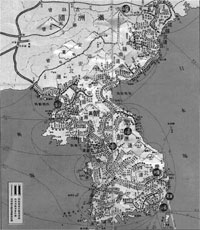
The railway network laid down by Japan (1936)
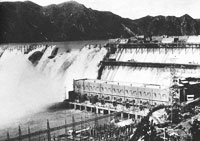
Sup’ung Dam that supported Korea’s power supply which was the largest in scale at the time.

Hungnam, developed as a newly industrialized city

Koreans, having become affluent, enjoying such recreations as skiing
※Photos from Japanese governance era
What Japan did in Korea was not “exploitation”, but an “investment” to modernize it and make it into an independent nation. This was partly out of Japan’s security interest where if a weak Korean Peninsula were to fall into Russian hands, a subsequent invasion of Japan would be the next logical step.
Japan used what would today be 6 trillion yen of its own taxpayer money to develop a railway system. 70% of the 8000 km of railway that exists today in both North and South Korea were laid during thie era of Japanese governance.
Furthermore, large scale construction of power plants, such as the Sup’ung Dam in the Yalu River which still remains to be the main source of power in North Korea, were undertaken during this time as well.
Japanese investments into Korea extended into the agricultural sector as well. Through irrigation and the cultivation of new land, an agricultural revolution took place, whereby the total agricultural area and production nearly doubled. In the north, large scale industrial areas were created, and by the 1930’s, industrial output was growing by an average of 12%.
A total of 3 billion yen of capital was committed to the investment into Korea. Considering the Japanese government budget at the time was 2 billion yen, this was an enormous investment which continued to run at a deficit for Japan until the end of its governance. However, the result of these investment was palpable. The standard of living in Korea increased and, during the 36 years of Japanese governance, the population of Korea had doubled. It would be dishonest to say that Japan oppressed and persecuted the Korean people.
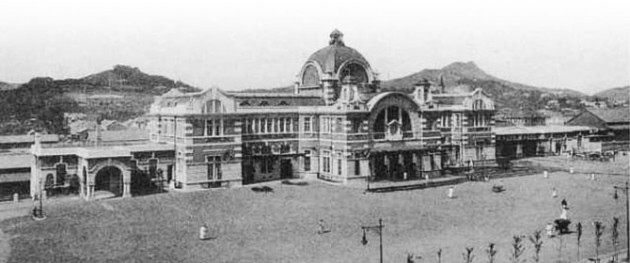
Keijo Station (currently Seoul Station) built during the era of Japanese governance.
At the time, it was the second in scale of station building in the East, after the Tokyo Station.
Japan Modernized Taiwan
Japanese rule was different from that of the West. Claims made by South Korea today are merely propaganda to incite anti-Japanese sentiment.
Japan’s governance of Taiwan also showed respect for the rights of the local people, and similar investments into its modernization were also taken. Japan sent its best people who contributed to the modernization of Japan, such as Shinpei Goto and Inazo Nitobe, to be Taiwan’s Governor General.
The north-south railway that Japan laid became, and continues to be, a major mode of transportation for people and material goods. Furthermore, roads were laid where there were none, and there were places where travel times were reduced from two days to a mere two hours by bike. The “Wushantou Dam” was built for poor farmers, and a better farm belt was created through irrigation. In its education policy, Japanese was taught in order to unify the various different languages that were spoken throughout Taiwan. Japanese police and teachers, in turn, studied Taiwanese. We interviewed a Taiwanese man who lived during that time (column below).
Japan’s Governance of Taiwan Was Completely Different From the West
Yinyin Yan, Taipei City resident
Taiwanese people do not think that Japan had done something wrong. Even after Japan lost, everyone here thinks that the era under Japanese rule were good times.
Even today, we are grateful and respect the Japanese who built the infrastructure in Taiwan.
Taiwan’s Chianan Plain used to be barren until the Japanese technician Yoichi Hatta built a waterway longer even than the Great Wall, and today it is a great farming area. Taiwan’s delicious rice came from Japan’s extensive research as well. The Japanese government was incredibly kind. When there was an outbreak of malaria, they showed genuine concern for me by giving me medicine as I was preparing to become a student soldier.
In comparison, the colonial policies of the West was that of “exploitation” whereby local profits would be repatriated to their own countries. They did not build any infrastructures or provide any education. As can be seen from the colonization of Indonesia by the Netherlands, many former colonial territories continue to suffer from poverty.



















